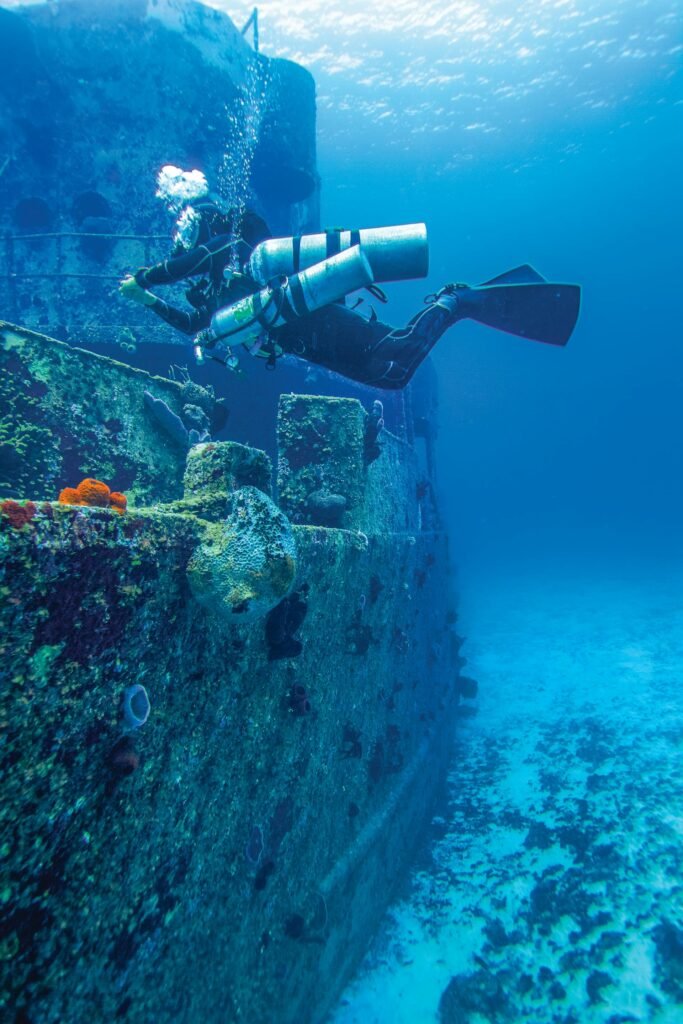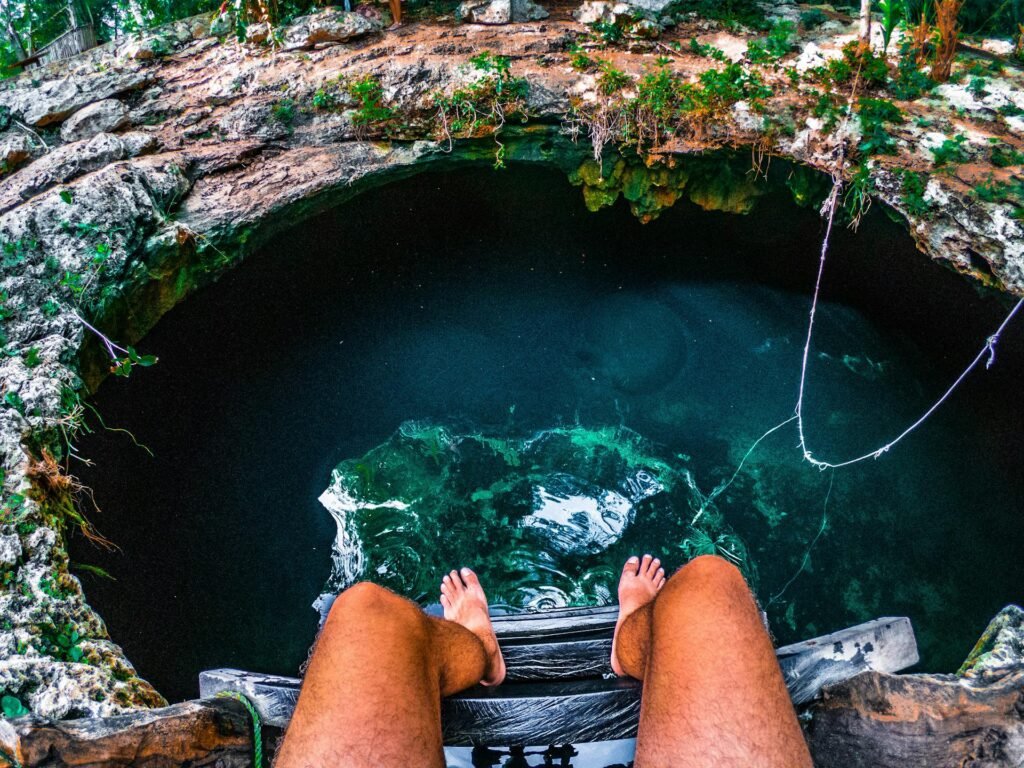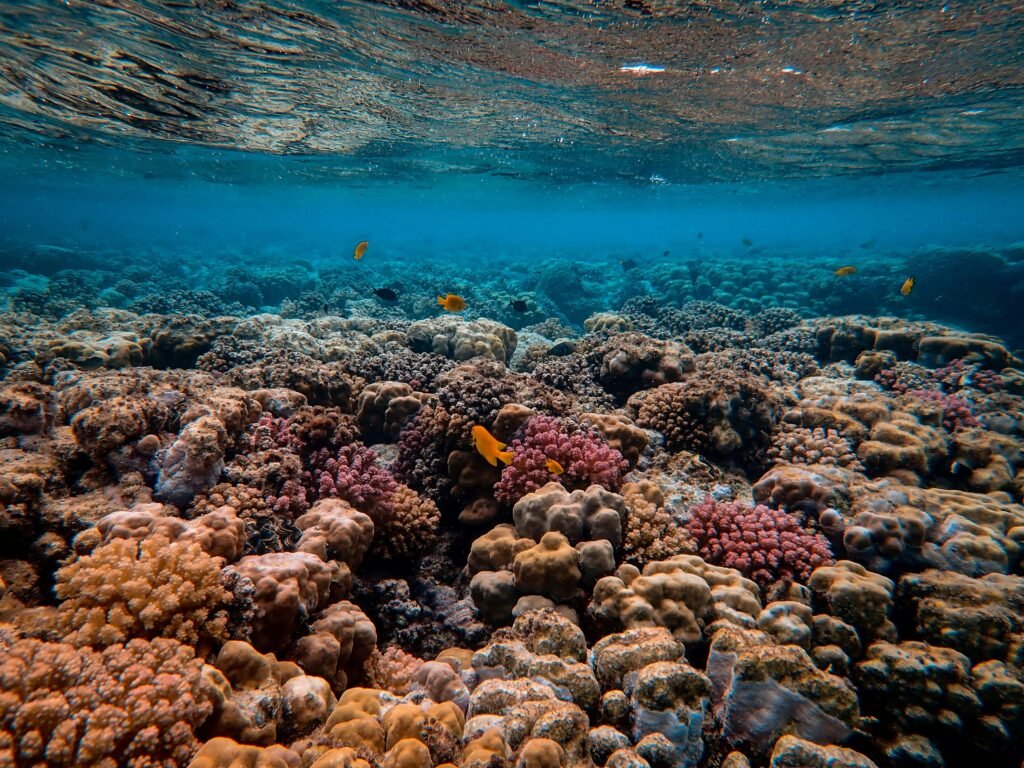Scuba Diving in Mexico: From Cenotes to Coral Reefs
Published on December 21, 2024 by Nick Cordon

Mexico is a world-renowned scuba diving destination, offering a rich variety of underwater experiences that cater to every level of diver. From the mysterious cenotes of the Yucatán Peninsula to the vibrant coral reefs of Cozumel, Mexico’s underwater world is as diverse as it is breathtaking. Whether you are an experienced diver or a curious beginner, the country’s unique aquatic ecosystems promise unforgettable adventures.

The Allure of Cenote Diving
One of the most unique diving experiences in Mexico is exploring cenotes—natural sinkholes filled with crystal-clear freshwater. These cenotes are connected by intricate cave systems and are found primarily in the Yucatán Peninsula. For divers, they offer an unparalleled opportunity to explore a surreal underwater world.
What Makes Cenotes Special?
Cenotes are steeped in history and natural beauty. They were sacred to the ancient Maya, who believed they were portals to the underworld. Today, they attract divers with their dramatic stalactites, stalagmites, and light beams that pierce through the water, creating an otherworldly atmosphere.
Popular cenotes for diving include:
- Dos Ojos: Known for its extensive cave system and mesmerizing light displays, Dos Ojos is perfect for both beginners and advanced divers.
- The Pit: A deeper cenote that offers a stunning descent with striking light rays and a hydrogen sulfide cloud at the bottom.
- Gran Cenote: A great choice for first-time cenote divers, with its shallow areas and easy access.
Diving Tips for Cenotes
- Certification: Most cenote dives require at least an Open Water certification, but advanced certifications may be needed for deeper or more technical dives.
- Equipment: Bring a reliable dive light to illuminate the caves and enhance your visibility.
- Guides: Always dive with a certified guide familiar with the specific cenote system.
Exploring Mexico’s Coral Reefs
Mexico’s coral reefs are among the most vibrant and biodiverse in the world. The Mesoamerican Barrier Reef, the second-largest reef system globally, stretches along Mexico’s Caribbean coast, providing endless opportunities for underwater exploration.
Cozumel: The Crown Jewel of Mexican Diving
Cozumel is synonymous with world-class scuba diving. Its reefs are teeming with marine life, including colorful fish, turtles, and nurse sharks. The island’s underwater visibility often exceeds 100 feet, making it a diver’s paradise.
Top dive sites in Cozumel include:
- Palancar Reef: Known for its towering coral formations and swim-throughs, this site is a must-see for divers.
- Santa Rosa Wall: A dramatic vertical wall dive featuring stunning coral, sponges, and pelagic species.
- Columbia Deep: Ideal for experienced divers, offering breathtaking coral pinnacles and frequent sightings of eagle rays.
The Riviera Maya and Beyond
Beyond Cozumel, the Riviera Maya offers excellent diving opportunities. Sites like Playa del Carmen and Puerto Morelos are easily accessible and boast diverse marine life, including the chance to dive with bull sharks during the winter months.
Another standout destination is the Banco Chinchorro Biosphere Reserve, located off the coast of southern Quintana Roo. This remote atoll is known for its pristine reefs, shipwrecks, and abundant marine species, making it a hidden gem for adventurous divers.

Diving in the Sea of Cortez
While the Caribbean side of Mexico often steals the spotlight, the Pacific coast and the Sea of Cortez offer equally compelling diving experiences. Jacques Cousteau famously called the Sea of Cortez “The Aquarium of the World” due to its incredible marine biodiversity.
Highlights of the Sea of Cortez
- Cabo Pulmo National Park: This UNESCO World Heritage Site features a recovered coral reef teeming with life, including large schools of jackfish, groupers, and even whale sharks.
- La Paz: A hub for diving with sea lions at Los Islotes and spotting giant manta rays.
- Gordo Banks: A deepwater seamount that attracts pelagic species like hammerhead sharks and marlins.
Seasonal Encounters
The Sea of Cortez offers seasonal highlights, such as:
- Whale Shark Season: Typically from October to March, divers and snorkelers can swim alongside these gentle giants.
- Humpback Whales: From December to April, their haunting songs and breaches are a treat for divers.
Marine Conservation in Mexico
Mexico’s diving destinations are not only stunning but also serve as critical habitats for marine species. Conservation efforts are vital to preserving these underwater ecosystems for future generations.
Protected Areas
Mexico boasts several marine protected areas (MPAs), including:
- Cozumel Reefs National Park: Established to safeguard the island’s delicate coral ecosystems.
- Banco Chinchorro Biosphere Reserve: A protected atoll that limits human activity to ensure ecological balance.
- Revillagigedo Archipelago: A remote Pacific site known for its megafauna, including sharks and manta rays.
How Divers Can Help
- Eco-Friendly Practices: Avoid touching or disturbing marine life and refrain from collecting souvenirs.
- Sustainable Operators: Choose dive shops committed to environmental sustainability.
- Participate in Cleanups: Join organized underwater cleanups to remove debris from dive sites.
Practical Information for Diving in Mexico
When to Go
Mexico offers year-round diving, but the best time depends on your destination:
- Caribbean Coast: November to May offers calm seas and excellent visibility.
- Sea of Cortez: October to November is ideal for warm water and peak marine life activity.
- Bull Sharks: Winter months are the best for encounters in Playa del Carmen.
Getting There
Major international airports in Cancún, Cozumel, and Cabo San Lucas provide easy access to top diving destinations. Domestic flights and ferries connect less accessible locations.
What to Pack
- Certification Card: Proof of certification is required at most dive shops.
- Dive Log: Keep a record of your dives and showcase your experience.
- Personal Gear: While rental gear is widely available, bringing your own ensures a perfect fit and familiarity.
Conclusion
Scuba diving in Mexico offers something for everyone, from the mystical depths of cenotes to the vibrant life of coral reefs and the vast biodiversity of the Sea of Cortez. Whether you’re chasing whale sharks, gliding through underwater caves, or marveling at coral gardens, Mexico’s waters promise memories that will last a lifetime. With a commitment to sustainable diving practices, you can explore these aquatic wonders while helping to preserve them for generations to come.
So, pack your fins and dive into Mexico’s underwater world. Adventure awaits beneath the surface!